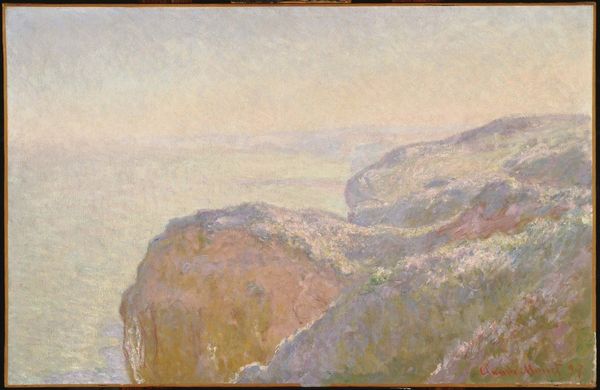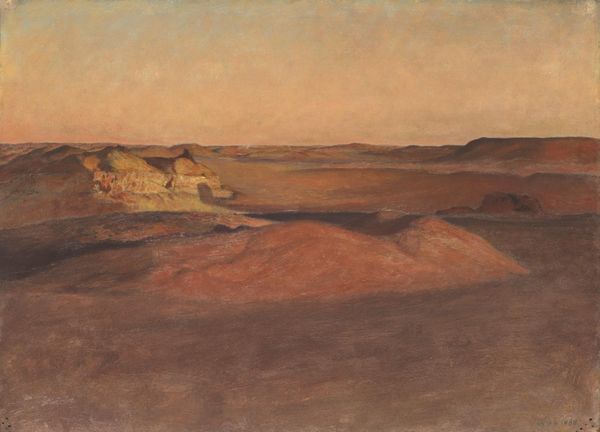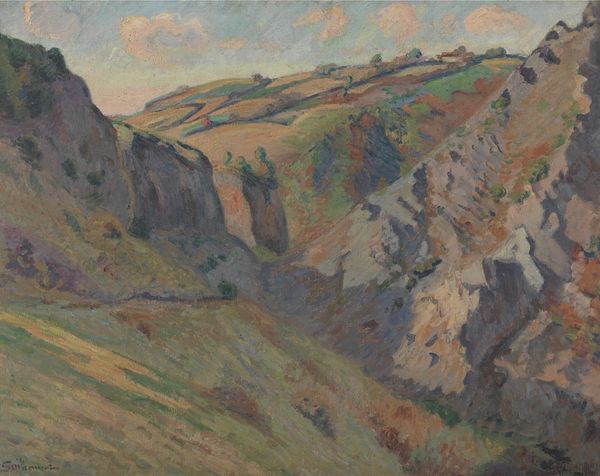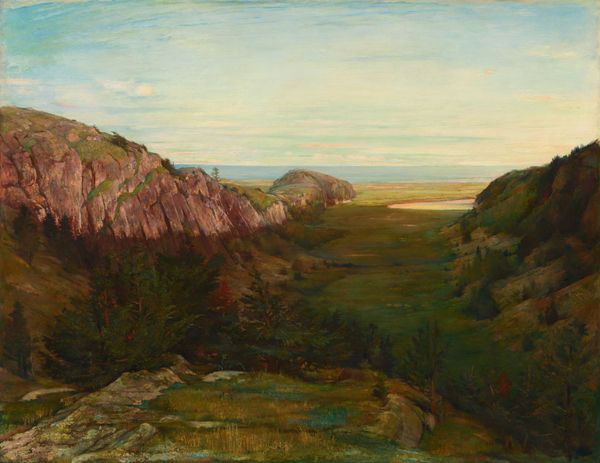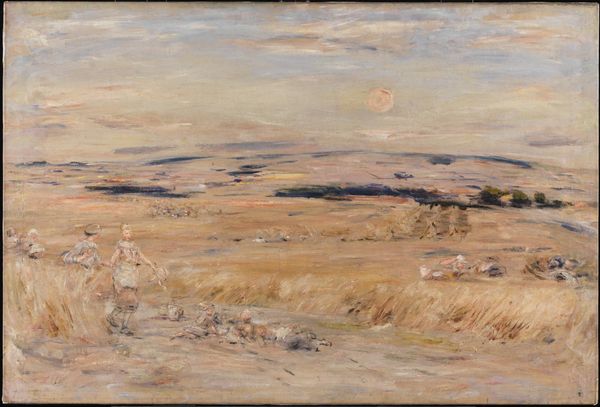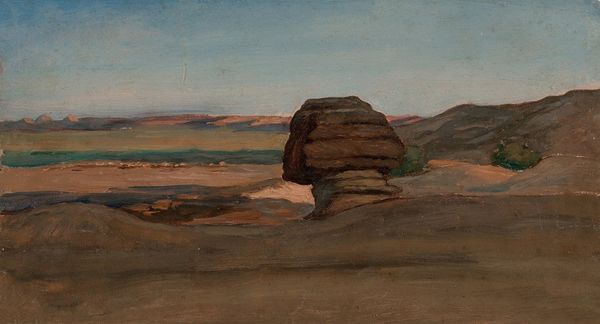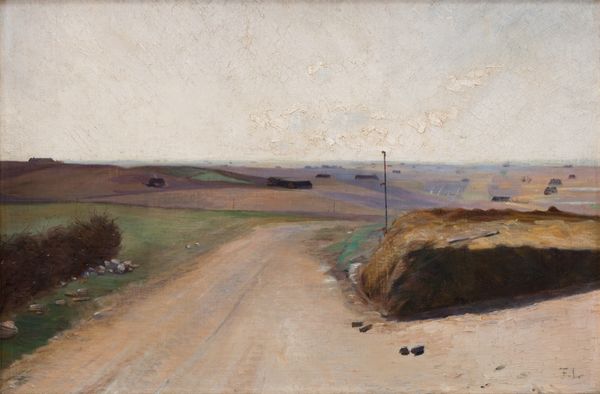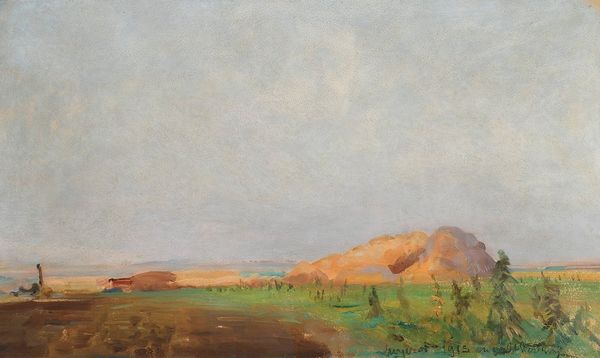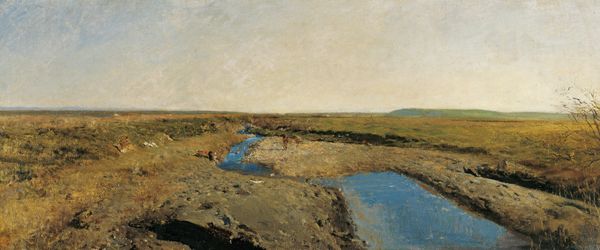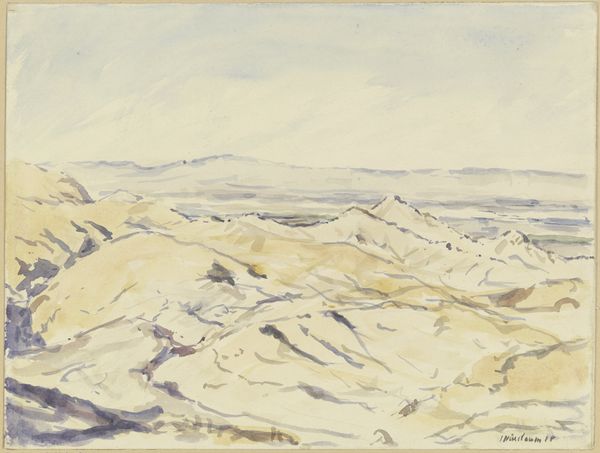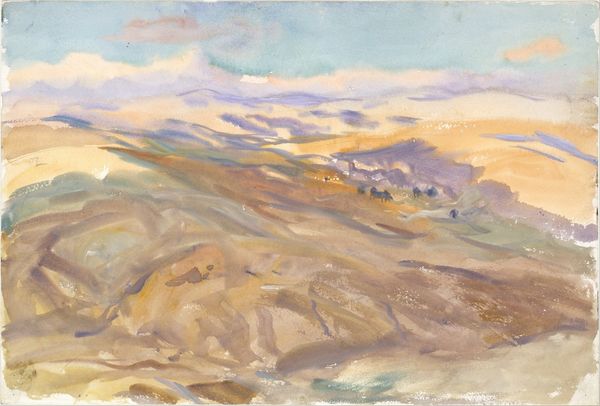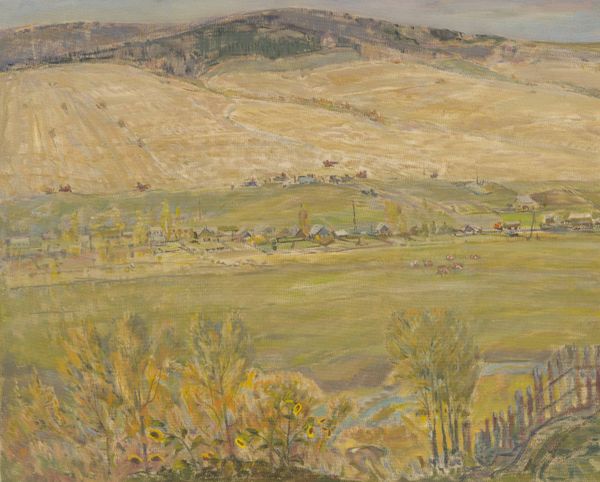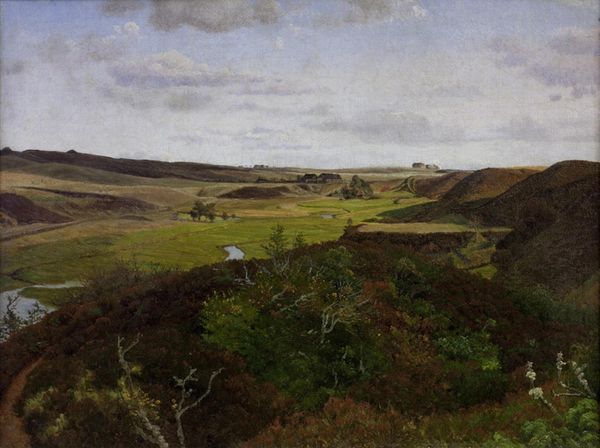
Dimensions: support: 711 x 1105 mm
Copyright: CC-BY-NC-ND 4.0 DEED, Photo: Tate
Editor: Here we have John Singer Sargent's "The Plains of Esdraelon," currently residing at the Tate. It’s this sweeping landscape done in oil… and I’m struck by how empty it feels, almost desolate. What do you see in this piece? Curator: The emptiness speaks volumes. Esdraelon, historically a fertile and contested ground, resonates with cycles of conflict and cultivation. The furrows plowed into the land become symbolic wounds, marking both destruction and the promise of renewal. What cultural memories do you think Sargent was trying to evoke? Editor: I hadn’t considered the historical weight of the location itself. So, the emptiness is not just visual, but a reflection of the region's turbulent past? Curator: Precisely. The starkness invites contemplation on the enduring, often violent, relationship between humanity and the land. I find the contrast between the soft brushstrokes and the harsh reality quite striking. Editor: This adds a whole new dimension to my understanding. Thank you. Curator: My pleasure. It is rewarding to unveil the layers of symbolism embedded within such a seemingly simple landscape.
Comments
tate 7 months ago
⋮
http://www.tate.org.uk/art/artworks/sargent-the-plains-of-esdraelon-t00125
Join the conversation
Join millions of artists and users on Artera today and experience the ultimate creative platform.
tate 7 months ago
⋮
The Plains of Esdraelon (or Jezreel) extend from the Mediterranean coast to the Jordan river in present day Israel. They are sometimes called the valley of Megiddon, anglicised as ‘Armageddon’, the battlefield in the New Testament where the powers of good and evil fight at the end of the world.Sargent first visited the Holy Land in 1905–6, to make studies which would lend cultural and topographical authenticity to his biblical paintings. However, unlike artists Holman Hunt or James Tissot, his interest was not one of intense religious belief, but a romantic fascination with exotic locations and with ancient customs. Gallery label, May 2007
